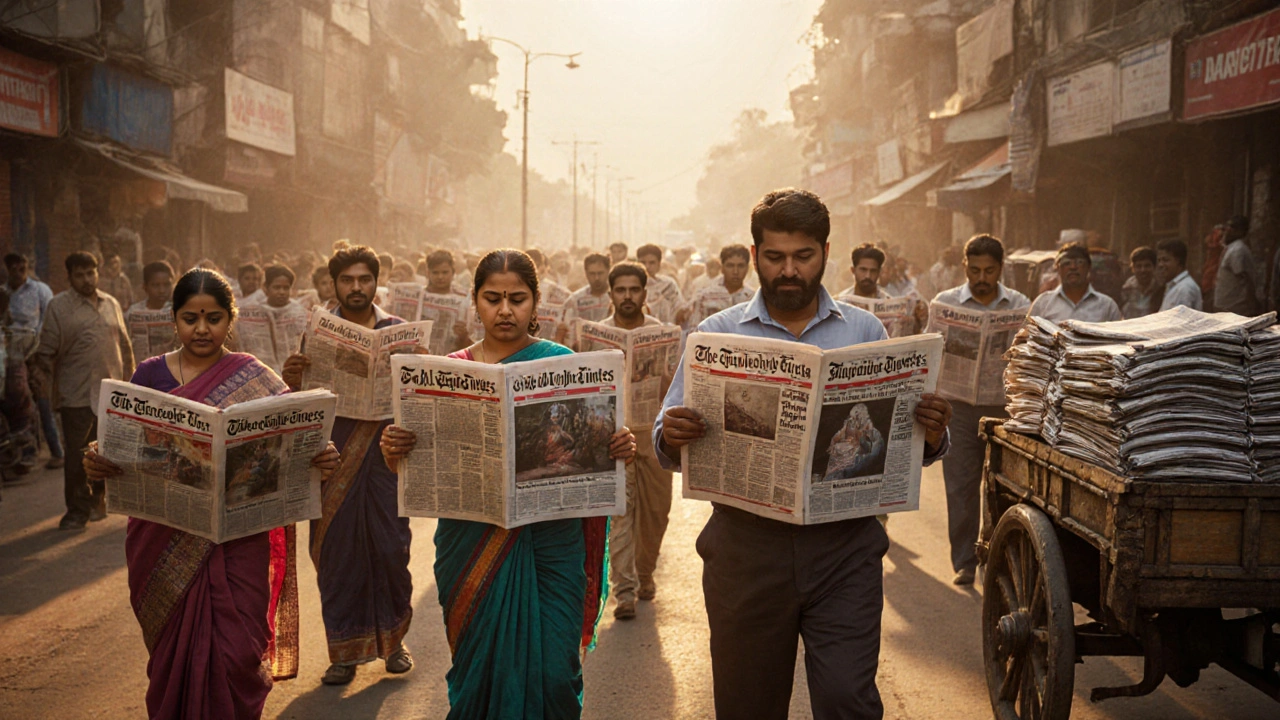Newspaper Readership: Why Print News Still Matters in London
When we talk about newspaper readership, the number of people who regularly read physical newspapers, often daily, for local and national news. Also known as print media consumption, it’s not dead—it’s just quieter. In London, you’ll still see people reading the Daily Mail, a right-wing British daily newspaper known for its bold headlines and strong editorial stance on immigration and national identity on the Tube, or flipping through the Guardian, a trusted, independent UK paper owned by the nonprofit Scott Trust, with deep coverage of politics and social justice at a café in Camden. These aren’t just habits—they’re signals of trust. While digital alerts buzz nonstop, print still offers a pause. A moment to focus. A paper doesn’t track you. It doesn’t push you toward outrage. It just lays out the facts, sometimes with bias, but always with structure.
So who’s still reading? Older Londoners, yes—but also young professionals who want to escape algorithm-driven noise. A 2024 survey found that over 40% of Londoners aged 45+ read a physical paper at least three times a week. Among those under 35, it’s lower, but not zero. Many choose print for deep dives: the NHS crisis, the cost of living, or the latest Tube strike. They want context, not just headlines. And that’s where BBC News UK, the UK’s most trusted public service broadcaster, delivering impartial, ad-free news with rigorous fact-checking comes in. Even though it’s mostly digital now, its tone, depth, and credibility still shape how print stories are written and read. The same themes show up everywhere: housing, healthcare, inequality. Whether it’s on paper or screen, people in London are hungry for clarity.
And here’s the thing: newspaper readership isn’t just about sales numbers. It’s about influence. When the Daily Mail runs a front-page story on benefit cuts, it doesn’t just report—it pushes. When the Guardian publishes a long-form piece on air pollution in East London, it sparks council debates. Print still holds power because it’s tangible. You can hold it. You can leave it on the kitchen table. You can show it to someone else. That physical presence makes the news feel real, not just viral. In a city where 8 million people wake up to different versions of the same story, print still gives some a shared reference point.
What you’ll find below isn’t a history lesson. It’s a snapshot of how news shapes life in London right now. From the weird symptoms of new COVID variants to the real cost of homelessness, from who owns the Guardian to whether the BBC is truly unbiased—these stories all connect back to one thing: how we get our information, and why it still matters whether it’s on paper or not.
Why are newspapers dying? The real reasons behind the decline of print news
Newspapers are disappearing because digital news is faster, cheaper, and free. Print revenue collapsed as ads vanished, trust eroded, and readers switched to phones. Local papers are gone-and with them, accountability.
What is the most read newspaper in the world?
The Times of India is the most read newspaper in the world, with over 3.3 million daily print copies. It leads globally due to its affordability, wide reach across India, and deep cultural integration - far ahead of Western papers like The New York Times.

